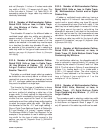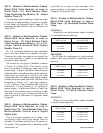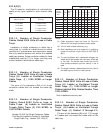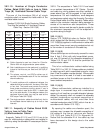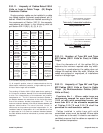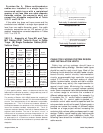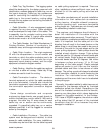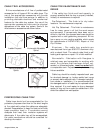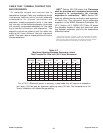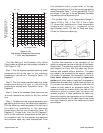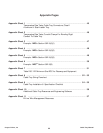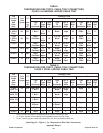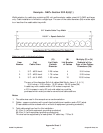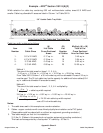
41
Cable Tray Manual Cooper B-Line, Inc
CABLE TRAY. THERMAL CONTRACTION
AND EXPANSION
All materials expand and contract due to
temperature changes. Cable tray installations should
incorporate features which provide adequate
compensation for thermal contraction and
expansion. Installing expansion joints in the cable
tray runs only at the structure expansion joints does
not normally compensate adequately for the cable
tray's thermal contraction and expansion. The
supporting structure material and the cable tray
material will have different thermal expansion
values. They each require unique solutions to control
thermal expansion.
NEC
®
Section 300.7(B) states that 'Raceways
shall be provided with expansion joints where
necessary to compensate for thermal
expansion or contraction.' NEC
®
Section 392
does not address thermal contraction and expansion
of cable tray. One document which addresses
expansion is the NEMA Standards Publication No.
VE 2, Section 4.3.2. NEMA VE-2 Table 4-2 shows
the allowable lengths of steel and aluminum cable
tray between expansion joints for the temperature
differential values.
Reprinted with permission from NFPA 70-1999, the National Electrical Code®,
Copyright© 1998, National Fire Protection Association, Quincy, MA 02269. This reprinted
material is not the complete and official position of the National Fire Protection Association,
on the referenced subject which is represented only by the standard in its entirety.
Temp. Stainless Steel
Differential Steel Aluminum 304 316 FRP
°F (°C) Feet (m) Feet (m) Feet (m) Feet (m) Feet (m)
25 (-4) 512 (156.0) 260 (79.2) 347 (105.7) 379 (115.5) 667 (203.3)
50 (10) 256 (78.0) 130 (39.6) 174 (53.0) 189 (57.6) 333 (101.5)
75 (24) 171 (52.1) 87 (26.5) 116 (35.4) 126 (38.4) 222 (67.6)
100 (38) 128 (39.0) 65 (19.8) 87 (26.5) 95 (29.0) 167 (50.9)
125 (51) 102 (31.1) 52 (15.8) 69 (21.0) 76 (23.2) 133 (40.5)
150 (65) 85 (25.9) 43 (13.1) 58 (17.7) 63 (19.2) 111 (33.8)
175 (79) 73 (22.2) 37 (11.3) 50 (15.2) 54 (16.4) 95 (28.9)
Table 4-2
Maximum Spacing Between Expansion Joints
That Provide For One Inch (25.4 mm) Movement
For a 100°F differential (winter to summer), a steel cable tray will require an expansion
joint every 128 feet and an aluminum cable tray every 65 feet. The temperature at the
time of installation will dictate the gap setting.



